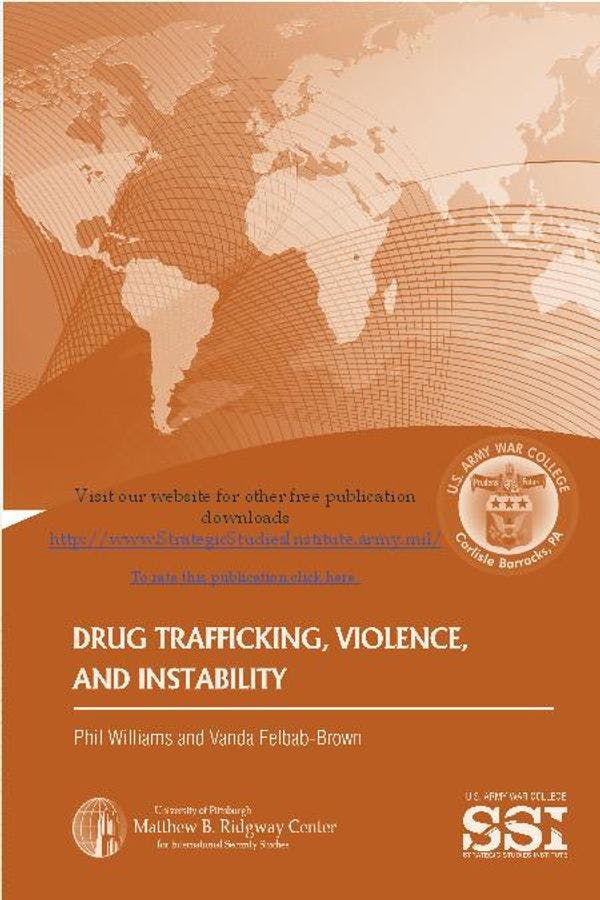Drug trafficking, violence and instability
This report serves to introduce the series by providing general conceptions of the global security challenges posed by violent armed groups; identify the issues of greatest import to scholars studying the phenomenon; and, emphasise the need for the U.S. Government to understand variations in the challenges it faces from a wide range of potential enemies.
Drugs have funded insurgency not only in Afghanistan but also in countries as diverse as Colombia and Burma. Moreover, the drug industry has proved both resilient and adaptive. As the situation in Colombia has improved with the destruction of large drug trafficking organizations with a high degree of vertical integration, it has deteriorated in Mexico. As Mexican drug trafficking organizations have come to dominate wholesale markets in the United States, so the drug trafficking organizations in Mexico have become increasingly powerful and increasingly ruthless in their competition with one another. Indeed, the United States is facing a massive upsurge of drug-related violence on its southern border. Most of this is internecine violence among Mexican drug trafficking organizations themselves; some is directed against the Mexican government. The major Mexican drug trafficking organizations have a presence in almost all major U.S. cities and are closely linked to many gangs.2 According to a Congressional Research Service Report, however, the spillover of violence from Mexico to the United States predicted by many observers has not yet materialized fully, even though its potential is significant.3
Keep up-to-date with drug policy developments by subscribing to the IDPC Monthly Alert.
